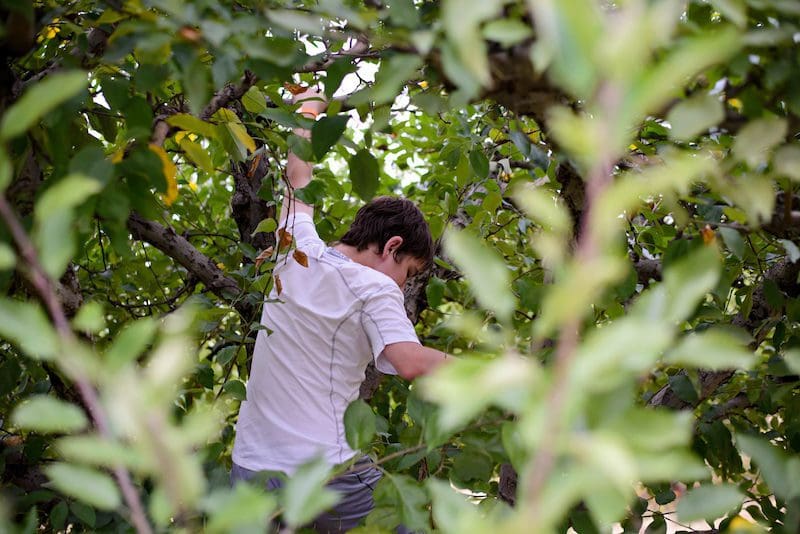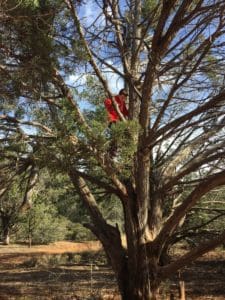The Jackson kids taking on a few St Louis trees
One of the most nostalgia-inducing hallmarks of childhood is the innocent excitement of climbing a tree. Of course, there’s nothing better than having a tree in your own yard to scramble up, where you can enjoy hazy summer days and wholesome memories for years to come.
Maybe you want your home to have a tree that you can build a treehouse in or simply one where your family can enjoy the growing outdoor pastime of tree climbing; something so pure and fulfilling that gets you active and enjoying nature. From treetop canopy walks to classic climbing, this fun activity is becoming increasingly popular. Here are a few of the best trees for climbing in St. Louis.
 1. Oaks
1. Oaks
Missouri is home to a variety of gorgeous oak trees, the wood from which is widely used for products across the state and nationwide. Some of the varieties include the white oak, southern red oak, black oak, cherrybark, and scarlet oak. Oaks are known for their durability, symmetrical beauty, and acorns.
2. Sugar Maple
The sugar maple is a widely appealing tree. It showcases a stunning red color, looks spectacular in the fall, and can live close to 200 years. A striking addition to any yard, this sturdy tree can be climbed once it’s well-rooted and established and can also be used to make syrup from its sap — a definite bonus.
3. American Elm (Historically)
Historically, the stately American Elm, native to Missouri, was an excellent 
While it is still possible to cultivate an American Elm in Missouri, it has a high likelihood of succumbing to the disease — and likely won’t grow to climbing height before. Many of the strongest, oldest specimens of the American Elm have already died off.
4. Trees with Specific Characteristics
Regardless of the specimen, there are a few ways you can tell if a given tree would make an ideal climbing tree. Optimally, the tree should have its first strong branches be only a couple of feet of the ground so that they are within easy reach.
The branches that will be used for foot and handholds should be conveniently spaced, so maneuvers to reach the next one are not too difficult. Of course, the tree should be sturdy, healthy, and cleared of any dead or broken limbs.
If you want to start learning about climbing trees or meet with other like-minded tree climbers in the St. Louis area, you’re in no shortage of options! Adventure Tree offers climbing programs for children and youth, while Vertical Voyages in St. Louis offers courses for all ages where you can learn about the specialized equipment needed to conquer large trees.
As well, the Missouri Botanical Garden is well known for its famous Canopy Climbs where you can enjoy incredible elevated vistas, learn tree climbing technique and safety, and meet highly knowledgeable instructors. Partaking in this exciting sport and meeting with the local community will help you learn more about what to look for in the perfect climbing tree.
Need a residential tree service in the St. Louis area? Jackson Tree Service LLC can help. To request a free quote for the service you need, get in touch with our team at (314) 626-8338.


